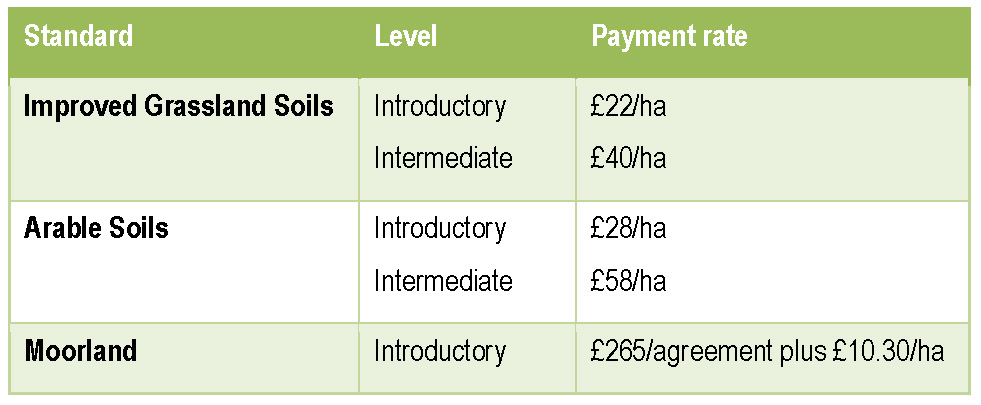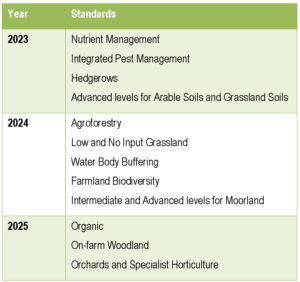The steady drip feed of information about the post-BPS world continues. Here are some of the latest developments.
Sustainable Farming Incentive (SFI)
New guidance, stemming in part from the pilot, has been issued on how the general scheme to be released later this year will work. This guidance contains few surprises, but there are some points to note:
- There will be no “window” for applying as in previous schemes. SFI will be open for applications all year round.
- As in the pilot, payments will be quarterly. The RPA must be notified of mapping changes as and when they occur, with payments automatically adjusted accordingly.
- There will be an annual window in which standards under the SFI can be changed and parcels can be added or removed. No alteration will apparently be possible outside this window.
- Commons will have their own SBIs for purposes of the SFI. Each will be managed by a “single entity” able to demonstrate “management control”, which will receive payment and then distribute it (or not) in a manner completely outside the SFI’s rules. This looks likely to concentrate more power into commoner’s associations and similar bodies.
- Provided there is no direct double funding, i.e. payments for exactly the same action, the SFI will be stackable both with private sector funding such as carbon and biodiversity offset trading and other ELM schemes. This means the same parcel of land could theoretically be used for a biodiversity offset scheme, the sale of soil carbon, an SFI grant, a Local Nature Recovery grant and perhaps even a grant from the local water company to reduce nutrient for good measure. As the system develops, it looks increasingly probable that, rather than a whole farm area-based grant, it might be viable to have large amounts of grant funding concentrated onto small areas of the farm, perhaps only a few acres, if these schemes are designed carefully.
- The RPA have released a list of Countryside Stewardship options which can be on the same area as the SFI standards currently available. Some Environmental Stewardship options will also be combinable with the SFI, but these have not yet been released.
- The Annual Health and Welfare Grant, funding an annual visit by the vet for general health and also some of the actions the vet recommends, will be available regardless of whether other SFI funding is taken. This appears to be almost a separate scheme entirely, just with SFI branding.
For now, still, only the Annual Health and Welfare Grant, Moorland Standard, and Improved Grassland and Arable Soils Standards are available, and only to Intermediate Level for the Soils Standards and Introductory Level for the Moorland Standard. Payments rates are shown below:

Higher levels of these standards will be made available in due course. Further standards are also forthcoming: DEFRA has released the following timetable for these:

We still await the fine detail of the application process and what the annual declaration (the closest thing to an annual claim) will look like in practice.
Landscape Recovery
The first round for this “Tier 3” of ELMS is now open. It is limited to areas of 500-5,000ha, and offers funding for “restoring England’s streams and rivers” and “recovering and restoring England’s threatened native species”. The application process is very different to previous schemes, requiring a detailed, bespoke project document to be evaluated by an independent assessment panel. It is a process that will be more familiar to the charitable sector than resembling previous agricultural subsidies. This perhaps indicates the scheme’s intended audience.
The guidance also states that projects should only include farming in a highly limited capacity, such as conservation grazing, if it is involved at all. This is in marked contrast to DEFRA’s previous rhetoric such as in the November 2020 policy document “The Path to Sustainable Farming: An Agricultural Transition Plan 2021 to 2024” which said Landscape Recovery “will be for farmers who want to go even further” with an emphasis on collaboration between farmers. Precisely, alas, as we predicted in our article last year “The Future of Farm Policy (29/09/2021)”: “ …Landscape Recovery, which will involve very large “rewilding”-type projects. This is likely to mainly interest wildlife charities and large corporations looking to improve their “green” credentials.”
In other words, when governmental promises were made to maintain the agricultural subsidy budget at 100% of its level prior to leaving the EU, we were yet to be told that 30% of this budget would be explicitly for funding the long-term removal of land from agricultural production!
Meanwhile, in Wales
The Welsh Government have also released some information about their own future, although details are sparse. Confirmation is only of a total level of funding, £227m over the next three years, £100m of which will go to six headings of:
- Farm scale land management: funding for farming in a way perceived as environmentally beneficial, such as growing protein crops.
- On-farm environmental improvements: funding environmental efficiency improvements on farm, such as “fuel feed and nutrient efficiency”, “circular economy approaches” and “use of renewable energy”.
- On-farm efficiency and diversification: including new technology and equipment.
- Landscape scale land management: appears similar to Landscape Recovery in England.
- Woodland and forestry: specifically, the creation of 43,000ha thereof.
- Food and farming supply chains: including investment in the “Welsh food and drink industry” more generally.
While there is a definite environmental focus, there also seems to be a significant weight given in Wales to supporting the production of food, albeit in a sustainable way, which is altogether absent from the English system. This is interesting because previously, due to the relative value of their BPS payments, English farmers (along with their counterparts in Northern Ireland) have historically been the winners of the “postcode lottery” of farming subsidy. Perhaps that situation is set to change.
To download/view article click here

